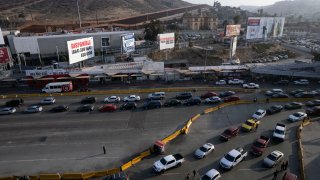
The University of San Diego released a report highlighting the economic benefits of the California-Baja California region.
Released by the USD Ahlers Center for International Business, the report focuses on California and Baja California as the largest integrated economic zone along the U.S.-Mexico border.
With its regional gross domestic project of almost $250 billion, "'CaliBaja' is home to diverse industries, including some with powerful manufacturing capabilities that drive cross-border economic activity and create jobs in both the United States and Mexico," the report stated.
The report's key takeaways include:
Get San Diego local news, weather forecasts, sports and lifestyle stories to your inbox. Sign up for NBC San Diego newsletters.
- A total of 30,932 higher-education degrees were conferred in San Diego County and 18,800 were conferred in Baja California in 2018, with 32% and 38% awarded in the science, technology, engineering, and mathematics fields, respectively;
- The region's manufacturing strengths helped CaliBaja weather the COVID-19 pandemic, with lower job losses in sectors such as information and manufacturing;
- The region has a strong manufacturing base compared to other parts of the U.S. and Mexico, particularly in audio-visual manufacturing and medical devices;
- The Cali Baja economy has been popular with outside investors, with Baja California attracting over a billion dollars a year in foreign direct investment and $2 billion in venture capital in San Diego in 2020 and 2021, mainly in the life sciences fields; and
- Improved infrastructure, such as the Otay Mesa East port of entry for trucks and commercial vehicles, creating jobs and promoting investment for both nations.
USD collaborated with the Universidad Autonoma de Baja California and Colegio de la Frontera Norte on the report, and also teamed up with the San Diego Regional Chamber of Commerce on policy research.
The full report is available here.

